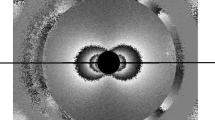Abstract
To understand the reason of defects and the basic mechanics involved in the welded tube numerical control bending process, it is important to study the effects of the weld and processing parameters on the strain distributions of the tube. The grid method that combines with vision-based surface strain measurement system GMASystem is used to research the strain distributions of the bent tube experimentally. The results show that the weld has a limited effect on the strain evolution as the weld is not located in the region of locally highest strains. As the weld line locates on the outside, the maximum tangent and thickness strain decrease by 0.94 and 8.78 %, while the maximum hoop strain increases by 22.15 % as compared with that the weld line locates on the middle. As the weld line locates on the outside and inside, the thickness strain decreases obviously in the weld region. The variation of thickness strain is little with smaller mandrel extension length, and the maximum thickness strain increases by 21.38 % as the extension length changes from 6 to 10 mm. The thickness strain decreases with larger push assistant level. The maximum thickness strain increases with larger bending angle.
Similar content being viewed by others
References
Ahmetoglu M, Altan T (2000) Tube hydroforming: state-of-the-art and future trends. J Mater Process Technol 98:25–33
Hashmi MSJ (2006) Aspects of tube and pipe manufacturing processes: meter to nanometer diameter. J Mater Process Technol 179:5–10
Yang JB, Jeon BH, Oh SI (2001) The tube bending technology of a hydroforming process for an automotive part. J Mater Process Technol 111:175–181
Trana K (2002) Finite element simulation of the tube hydroforming process-bending, preforming and hydroforming. J Mater Process Technol 127:401–408
Dyment JN, Worswick MJ, Normani F, Oliveira DA, Khodayari G (2003) Effect of endfeed on strains and thickness during bending and on the subsequent hydroformability of steel tubes. SAE Paper 2003-01-2837
Kim J, Kim YW, Kang BS, Hwang SM (2004) Finite element analysis for bursting failure prediction in bulge forming of a seamed tube. Finite Elem Anal Des 40:953–966
Panda SK, Kumar DR (2009) Study of formability of tailor-welded blanks in plane-strain stretch forming. Int J Adv Manuf Technol 44:675–685
Tan Z, Melin L, Magnusson C (1992) Application of an image processing technique in strain measurement in sheet metal forming. J Mater Process Technol 33:299–310
Tata MM, Oh JS, Lee D (1998) The nature of localized deformation in 6111-T6 aluminium alloy and polycarbonate. J Mater Sci 33:2781–2794
Kou YL, Yang H, Zhan M, Yue YB, Li H (2006) Research on strain distribution of thin-walled tube in NC bending process using grid method. China Mech Eng 17:31–34 (In Chinese)
Wen XY, Long ZD, Yin WM, Zhai T, Li Z, Das SK (2007) Texture evolution in continuous casting aluminum alloy AA5052 hot band during biaxial stretching. Mater Sci Eng A 454–455:245–251
Zhong M, Tang WQ, Li DY, Peng YH (2011) Experiment research on forming limit diagram (FLD) of magnesium alloy sheet AZ31B at warm condition. J Plasticity Eng 18(5):59–63 (In Chinese)
Valente RAF, Jorge RMN, Roque AP, Parente MPL, Fernandes AA (2008) Simulation of dissimilar tailor-welded tubular hydroforming processes using EAS-based solid finite elements. Int J Adv Manuf Technol 37:670–689
Ren N, Zhan M, Yang H, Qin YT, Zhang ZY, Jiang HM, Diao KS, Chen XP (2011) Weld characteristics and NC bending formability of QSTE340 welded tube. Trans Tianjin Univ 17:288–292
Abdullah K, Wild PM, Jeswiet JJ, Ghasempoor A (2001) Tensile testing for weld deformation properties in similar gage tailor welded blanks using the rule of mixtures. J Mater Process Technol 112:91–97
Strano M (2005) Automatic tooling design for rotary draw bending of tubes. Int J Adv Manuf Technol 26:733–740
Li C, Yang H, Zhan M, Xu XD, Li GJ (2009) Effects of process parameters on numerical control bending process for large diameter thin-walled aluminum alloy tubes. Trans Nonfer Metals Soc China 19:668–673
Li H, Yang H, Zhan M, Sun ZC, Gu RJ (2007) Role of mandrel in NC precision bending process of thin-walled tube. Int J Mach Tool Manuf 47:1164–1175
Dwyer N, Worswick MJ, Gholipour J, Xia C, Khodayari G (2002) Pre-bending and subsequent hydroforming of tube: simulations and experiment. Proceedings Numisheet 2002, Korea, November 2002
Li H, Yang H, Zhan M, Kou YL (2010) Deformation behaviors of thin-walled tube in rotary draw bending under push assistant loading conditions. J Mater Process Technol 210:143–158
Author information
Authors and Affiliations
Corresponding author
Rights and permissions
About this article
Cite this article
Ren, N., Yang, H., Zhan, M. et al. Strain distribution characteristics of welded tube in NC bending process using experimental grid method. Int J Adv Manuf Technol 66, 635–644 (2013). https://doi.org/10.1007/s00170-012-4354-2
Received:
Accepted:
Published:
Issue Date:
DOI: https://doi.org/10.1007/s00170-012-4354-2




